Each person who at least once in his life felt back pain, lower back, chest or neck. The first symptoms of pain and signs of pathological disorders of joint cartilage manifest in people in the middle age category after 30 to 35 years.
Symptomatic signs of osteochondrosis do not distinguish between a person's sexual and therefore can affect spinal vertebrae in men and women. However, there is a sad tendency to rejuvenate a bone storage disease when osteochondrosis is observed in children of the Middle and Senior Ages.
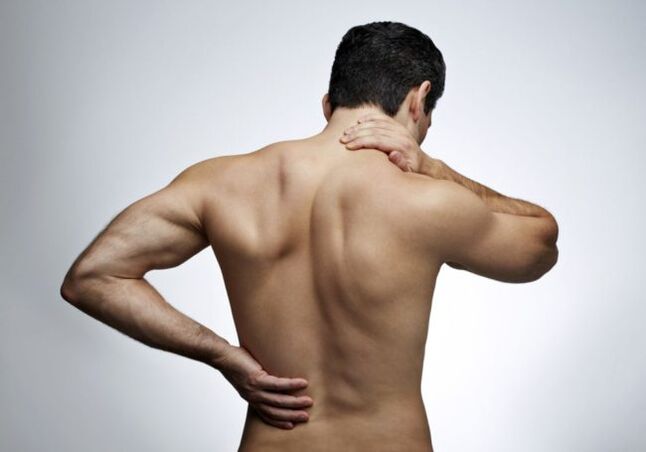
What is it?
The International Classifier of Diseases of the 10th Assembly determines osteochondrosis to the class of musculoskeletal system diseases and connective tissues. Osteochondrosis is divided into several categories:
- Juvenile osteochondrosis of the spine.
- Spine osteochondrosis in adults.
- Column osteochondrosis is not specified.
The causes of osteochondrosis are associated with a violation of metabolism in joint cartilage connection tissues, characterized by degenerative-distribution changes in the musculoskeletal system ligament apparatus and a general violation of the musculoskeletal system in the structural levels of the spine.
Pain syndrome occurs as a result of a disturbance of intervertebral disk integrity, leading to the axial displacement of the vertebrae and, as a result, the nerve roots in the vertebral channels are compressed. Symptoms and signs of osteochondrosis can affect any department of the vertebral system, sometimes developing for several years, they do not cause a person's uncomfortable sensations.
In most cases, the causes of osteochondrosis are associated with a person's professional activity. The risk group includes the following professional categories:
- counter;
- boxes;
- IT workers;
- office employees;
- professional athletes;
- Vehicle drivers.
However, it should be noted that signs of osteochondrosis are much more manifested in women than in stronger sex representatives. Many medical experts agree that the cause of osteochondrosis is prolonged wearing high shoes. As a rule, the first symptoms of manifestations of neurological diseases are diagnosed in women after 25 years.
There are frequent cases where the causes of osteochondrosis are caused by pregnancy. A person's lifestyle is not very important. People prone to obesity make up the largest percentage of patients with a neurological clinic. A person's proper posture and growth are also of great importance. It is in these patients that spinal spine osteochondrosis of the spine is most often determined.
In general, the expected factors in the development of the disease include:
- obesity;
- Physiological aging of the bone muscle system;
- metabolic violation;
- traumatic states of the spine;
- infectious damage to the joint components of the spine spine;
- inadequate nutrition;
- Hard physical work;
- A sedentary lifestyle.
However, the most significant causal factor in the development of neurological pathology is the hereditary (genetic) predisposition of a person to joint diseases, which makes sense in childhood or in youth.
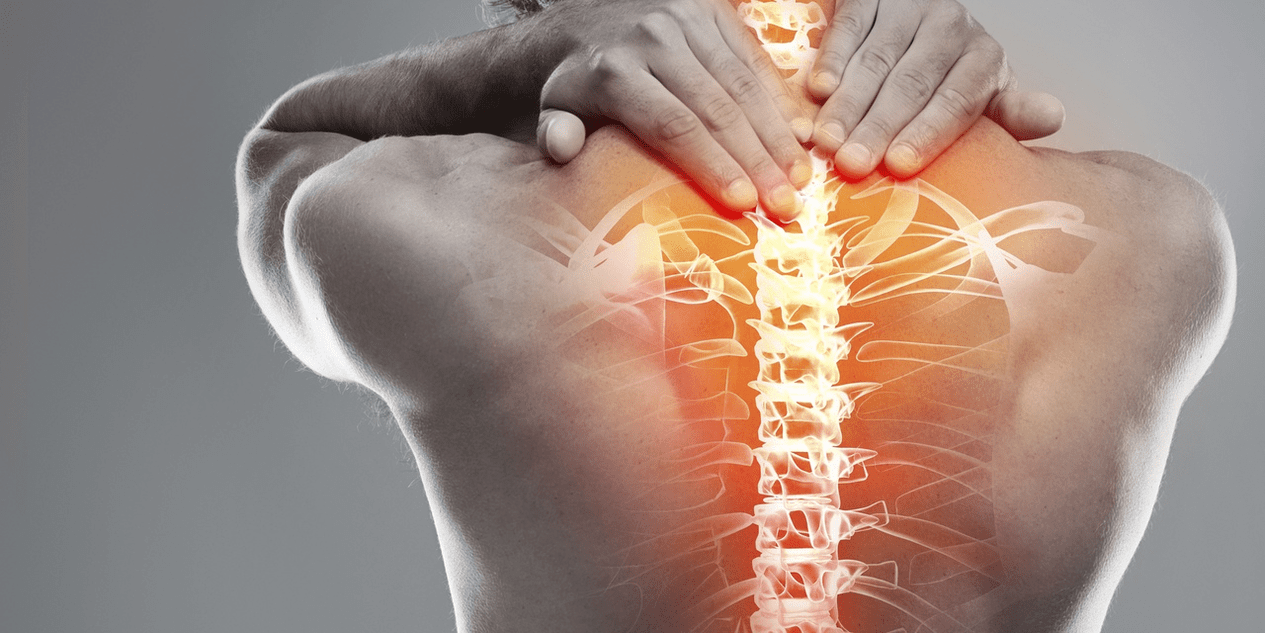
The development of the disease
With osteochondrosis, symptoms and treatment are determined, depending on the severity of the disease. Therefore, the development of osteochondrosis has 4 stages of the course of the disease:
- The first stage is the beginning of pathological neuralgia, characterized by the dehydration of the pulp nucleus on the intervertebral disc. As a result, microcracy occur in a fibrous ring. Signs and symptoms of osteochondrosis in this phase of development of neurological pathology do not cause special discomfort to a person. Only in the case of active physical actions, the affected departments of the spine spine are concerned.
- The second stage during a diagnostic laboratory exam is determined by reducing the height of intervertebral discs and their distances between each other. The classic sign of a pathological state is the beginning of fallen ligaments in the musculoskeletal system. 2nd degree osteochondrosis symptoms - uncomfortable pain, even with slight physical exertion, when pain painful or pulling occurs in the area of damage to the support system.
- The third stage is a partial limitation of mobility of the articular segments of the spine. In this phase of the development of neurological pathology, prolapse and disc protrusion occur. In some cases, arthrosis is formed in the intervertebral joints. Depending on the location of the damage zone, the patient feels symptoms of osteochondrosis pain in the neck, back or lower back.
- The fourth stage is the most difficult neurological disorders of the vertebral system, expressed in partial or complete limitation of joint mobility. In this state of diagnosis, bone growth (osteophytes) are formed at the site of vertebral compounds, which cause micro lesions to nerve branches and segments of the neighboring spine. In most cases, the symptoms of fourth degree osteochondrosis do not cause pain and unpleasant sensations, as the joints acquire a petrified appearance.
Types
In neurology, osteochondrosis is divided into several types:
- Cervical osteochondrosis of the spine.
- Thoracic osteochondrosis in the vertebral system.
- Lombsacral osteochondrosis of the spine spine.
There is also general osteochondrosis of the back, when several departments of the musculoskeletal system fall into the damage zone.
Symptoms
Consider what are the causes of osteochondrosis and which symptoms of a neurological disease manifest themselves in a specific damage zone.
Cervical osteochondrosis, symptoms and signs:
- Symptoms of pain in the cervical and occipital zone.
- Weakness in the neck muscles.
- Dizziness and headache in the temporal and/or occipital zone.
- Unstable intracranial pressure.
- The appearance of a crisis or click on the neck during the slope and/or the head curves.
- Shoulder or forearm pain.
- Numbness of the upper ends, especially the fingers.
With a neural pathology of the thoracic spine, osteochondrosis manifests itself by the following symptoms and signs:
- Heart pain.
- Symptoms of chest pain breathing limits.
- Radiating pain under the plates.
- Goose bumps in the body.
- Compression of the thoracic region and dormancy of the limbs.
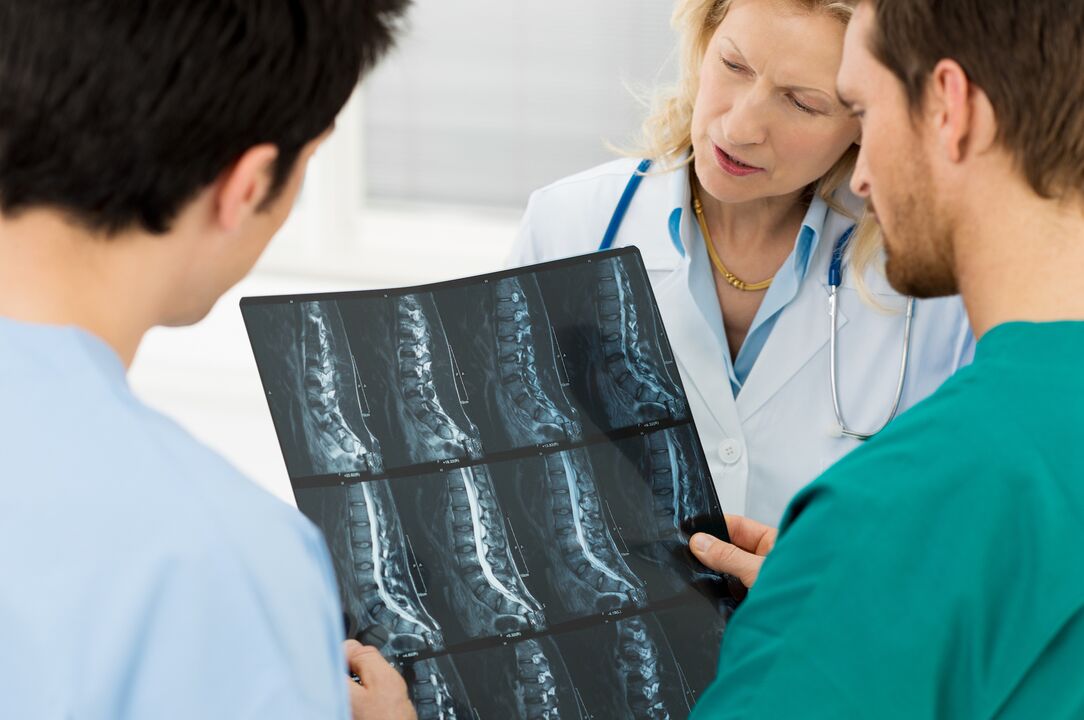
Before treating thoracic region osteochondrosis, it is necessary to clearly diagnose neurological pathology, as symptomatic signs are very similar to other diseases of the respiratory, cardiovascular and gastrointestinal system.
Back osteochondrosis is the most common category of neurological disorder of the vertebral system. The sacrifice and/or lumbar parts of the musculoskeletal structure of the spine fall into the defeat zone.
With rear osteochondrosis, symptoms, causes and treatment, it is necessary to determine that it is differentiated, since this anatomical part of the human body is more vulnerable to various lesions and neurological conditions. Frequently, the vertebral section of the lumbar region is subjected to other clinical pathologies, for example, pinching from the sciatic nerve, Ishias, radiculitis and so on.
The main feature of the neurological lesion of the lower back is the pain that increases during physical exertion. Symptoms of spinal osteochondrosis:
- A tingling in the legs.
- Stupid or painful pain on the back or lumbar, acute depreciation in these areas is often observed.
Osteochondrosis in children does not differ in the symptoms of pain from adult patients. Degenerative-distribution disorders in a child are a consequence of the genetic dependence of the musculoskeletal system. However, there is another cause of osteochondrosis in the child, when the young body fits the strongest overload of the muscle system. We are talking about professional sports or heavy physical work done by children.
Diagnosis
The diagnostic exam includes the following measures:
- Patient's history.
- X -ray X -ray of problem areas of the spine.
- Myelography.
- Magnetic or computer resonance tomography.
- In case of need, nuclear magnetic resonance imaging is used.
Treatment
Effectively cure degenerative spine disorders, possibly only at the early stage of the disease, when there are no complicating factors, and clearly determining the causes of osteochondrosis. The treatment of the disease implies a comprehensive medical approach to the problem.
At the early stage, a medicine effect on joint cartilage is made and physiotherapeutic procedures will help restore the lost plasticity of the bone-muscular system. The final stage of all the treatment of the musculoskeletal system is compliance with medical and preventive measures.
Having established the symptoms, signs and causes of osteochondrosis, the treatment of neuralgic pathology begins with conservative therapy, which allows eliminating pain syndrome and relieving inflammatory stress in the tissue structure of the spine. Pain symptom relief is performed by several therapeutic, epidural and other actions. The services of medical workers have provided a wide selection of drug pharmacological groups and medicines that allow us to interrupt pain loads and reduce muscle syndrome. Restore the activity of the vertebrates using physical therapy:
- actions of a static magnetic field;
- the use of low frequency currents;
- Ultrasound correction;
- Laser radiation and so on.
In the recovery and preventive period, it is very effective in the use of massage (hydromassage) and physiotherapy and physical education (exercise therapy), which strengthen the muscle corset of the lumbar, chest or cervical parts of the vertebral system and also contribute to the decompression of nerve roots.
Food recommendations for neurological pathology
Proper medical nutrition is of great importance as it increases the activity of drug treatment. There are no special conditions when choosing a diet. Food recommendations are based only on limiting certain food products and compliance with balanced rules to eat. The products used should provide the necessary spectrum of beneficial components of vitamins and minerals, with a minimum amount of salt.
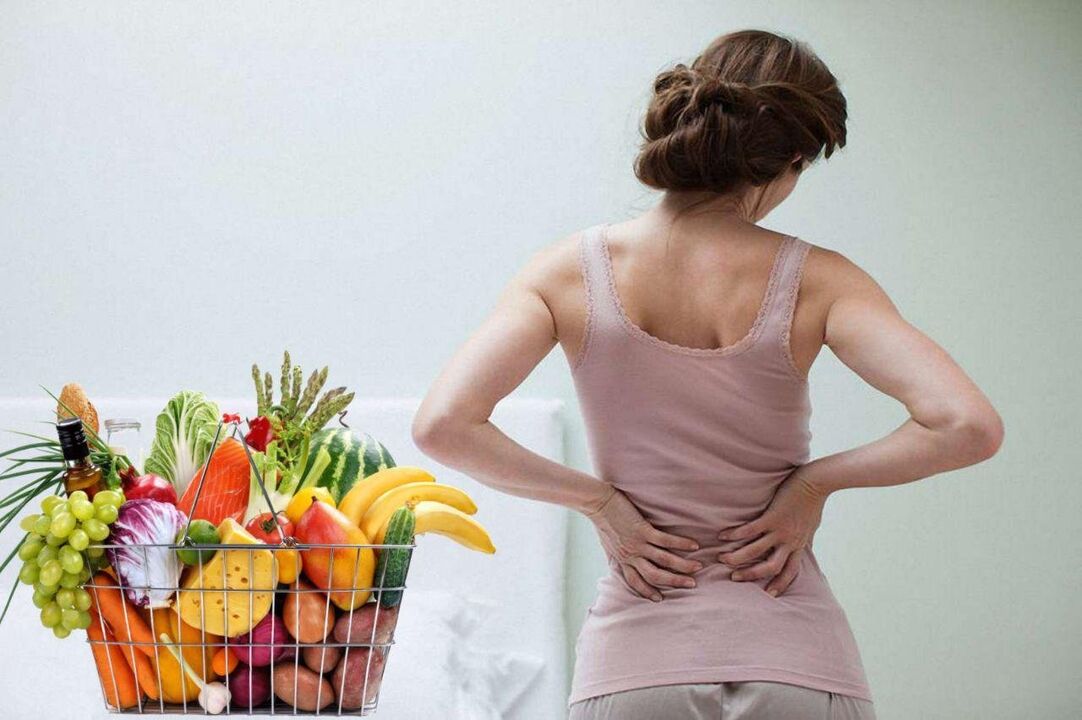
Recommended food:
- Fresh vegetables (carrots, cabbage, onion, tomatoes, cucumbers and other agricultural gifts of nature).
- Dairy and dairy products (kefir, fermented baked milk, cottage cheese, sour cream).
- Low -fat meat and fish in the diet.
- Fresh fruits and juices.
- Mushrooms, walnuts, sunflower seeds.
Food products that should be limited in the daily diet:
- Grape.
- Legumes.
- Sugar, salt, smoked and pickled products.
- Clear, tea, coffee, flour products and so on.
It is important to know that the daily use of two liters of purified water will stimulate the operation of the articular elements of the spine and also improve the peristalsis of the gastrointestinal tract.
Traditional Medicine Recipes
Treatment of traditional medicine is an alternative way to influence the joint structure of the spine. However, this treatment should be performed along with officially prescribed drugs for drug therapy.
Revenue No. 1. Saber. The perennial plant alcohol tincture can be rubbed with problem areas of the spine. In 200 g. The subjects -dried primers are taken by 500 ml of alcohol or product, which is alcohol.
Revenue No. 2. Home ointment of osteochondrosis. The composition of the ingredients:
- Flour - 1 tablespoon. L . ;
- Chicken egg - 1 pc. ;
- Butter - 80 g;
- Dining Vinegar (9%) - 1 tablespoon. l.
All therapeutic components are completely mixed and displayed in a dry, dark place for 2-3 days. The medicine is rubbed in the problem areas of the spare railing.
Revenue No. 3. Black radish tincture. To prepare a healing composition, it is necessary:
- 100 ml of vodka or diluted alcohol;
- 200 g of natural beekeeping (honey);
- 300 ml fresh black radish juice.
All ingredients are mixed and cost for 12 hours. This home compression will be an effective treatment for treatment not only for osteochondrosis, but will also help with other neurological disorders of the musculoskeletal system, for example, with radiculitis or rheumatism of the joints of skeletal structure.
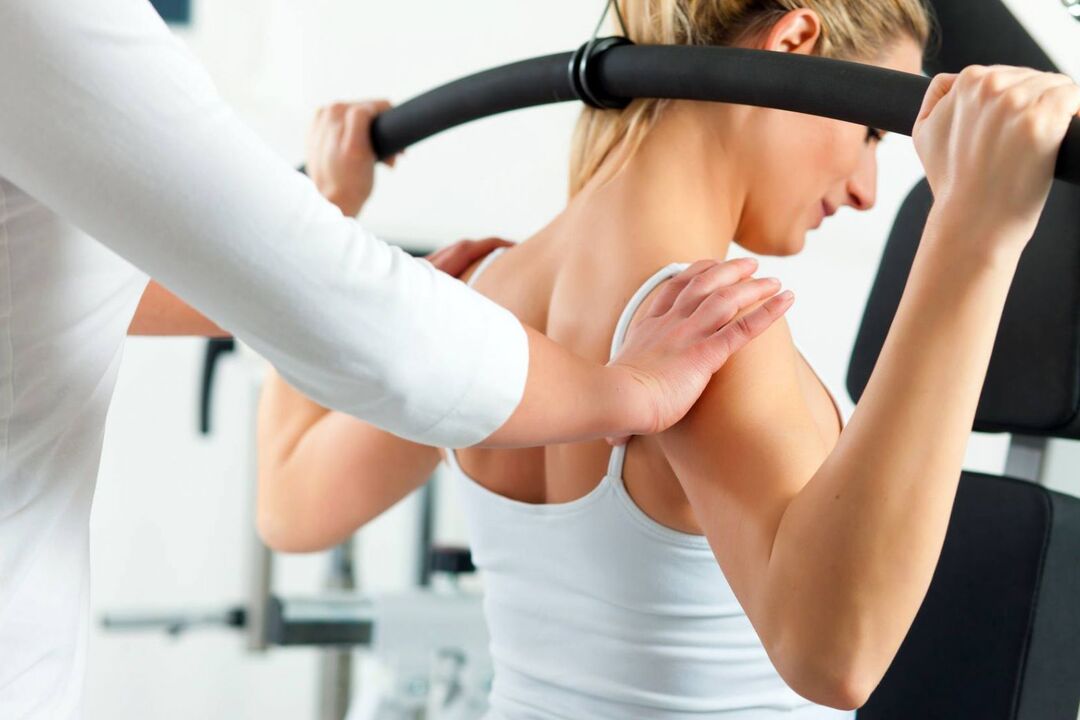
Preventive measures
Therapeutic prevention consists of adequate nutrition, personal and sanitary hygiene, as well as in accordance with the healthy standards of the hostel. You should also protect your body from exposure to infectious and bacterial agents. Daily physical education, walking in fresh air, summer and winter water procedures, will have a favorable effect on the body as a whole and in the articular segments of the spine in particular. It is especially important to perform preventive medical acts with a growing body, ie children.
Take care and always be healthy!

























